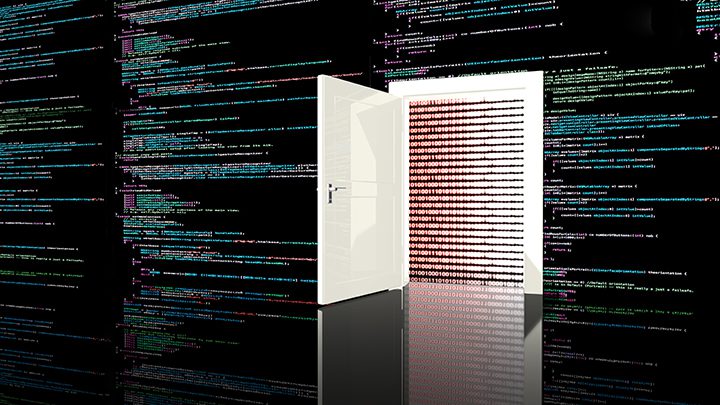
Data theft is harmful to individuals and larger organizations alike.
For individuals, it causes major distress and, typically, long-lasting psychological damage.
This is especially true if a cybercriminal has used the target’s personal information to demand ransom. Or if they managed to get their credit card information. Even after the virus is no longer on the computer, victims are left wondering if their data is safe.
For enterprises and smaller companies, a breach can cost them their business. When clients and customers find out that their data is not safe, they lose trust in the company.
What’s more, the financial damage that companies suffer during recovery from attacks is typically too much for their business, and they end up losing what they’ve built for years.
The most damaging data breaches are the ones that we don’t even notice until they cause major damage to us as individuals or companies.
One of the common types of cyberattacks that sneak up on devices to steal your data is backdoor malware.
What is Backdoor Attack?
Backdoor attack refers to a type of hacking cyber criminals use to bypass authentication and install a malicious virus onto your computer.
To do so, the attacker uses a backdoor — malware that enables hackers to access the system without authentication.
For example, the notorious Trojan virus is considered to be backdoor malware. The way it works is that hackers inject the virus into a file that gets downloaded to your computer.
Why is it hard to detect a Trojan?
A Trojan is not downloaded in one go. It uses a two-step process to get into your device.
The first step is to drop a smaller file on your computer. Even if you have a system that detects that the file is too large, the malware throws it off with this first step.
The second step is to retrieve another file from a remote location. This is the file that contains malicious code. After the entire file is on your computer, the downloading of the virus begins.
Once the malware is in your network, hackers can update it remotely or get access to your computer and obtain your sensitive information.
The Type of Attack Depends on the Motivation Behind the Hack
Besides data theft, a backdoor can be used to attack your network with a DDoS attack and slow it down or to target your client and customers.
The hacker typically aims to obtain your data because the majority of hacking is financially motivated, however, it all depends on the hacker’s intentions.
If the hacking is done or ordered by your competitors, they might want to overload your system to make it harder for you to work and for your customers and employees, as you’re your network.
What Makes You Vulnerable to Backdoor Attacks?
A backdoor attack is only possible because you have vulnerabilities in your system. The virus exploits those flaws to enter your network. It scans for vulnerabilities it can use as a pathway to your system.
Therefore, dealing with such flaws in the system is your first step to a more secure device. In the best-case scenario, you can find the flaws before the hacker does. That’s because the cybercriminal can use those vulnerabilities to enter the network even after you patch up the flaws.
Some of the things that make you vulnerable to backdoor attacks include:
- Parts of websites that have outdated components
- Systems that haven’t been updated for a long time
Protecting Your Device from a Backdoor Virus
Start with the essentials. This means basic precautions you can take to protect your device, including a firewall and reliable antivirus software protecting your device.
Firewalls and antivirus might detect that something is out of the ordinary, and they’re a basic set of tools you should have at hand to protect you from common threats.
A firewall might detect the virus while scanning for suspicious traffic. Antivirus software is effective against malware that already found its way to your computer.
Nevertheless, even if you managed to remove the backdoor virus, it doesn’t mean that you’ve successfully gotten rid of the malware.
The most challenging part of cyber protection, when it comes to backdoor malware, is getting rid of the virus entirely.
Backdoor continually camouflages itself behind different codes. This makes protection software such as antivirus less likely to be effective in mitigating this threat. Also, it might trick you into thinking that the virus is gone.
The way cybersecurity companies deal with backdoor shells, once the malware is in the system, is by isolating and quarantining the malware.
The best protection against backdoor malware is to have preventive measures against such an attack and combine them with the security that can detect the malware and remove shells on your devices.
Preventive methods don’t allow backdoor malware to be downloaded. Continual scanning of your files ensures that the malware is found on time.
Hackers Can Use Backdoor to Collect Your Data
Hackers have been using backdoor malware for years because it’s effective, and their victims are not aware of the attack.
Backdoor malware is difficult to detect because it’s hiding behind other files you might download to your computer. Once it’s in your device, it’s difficult to weed it out because hackers can regularly update the malware.
These viruses can stay on your device for months before you even notice that something is wrong. During that time, hackers have access to your devices, and they can collect your personal data.
Therefore, the best protection against backdoor attacks is to have the right preventive measures on your devices and regularly scan your devices for this stubborn and hidden threat.
